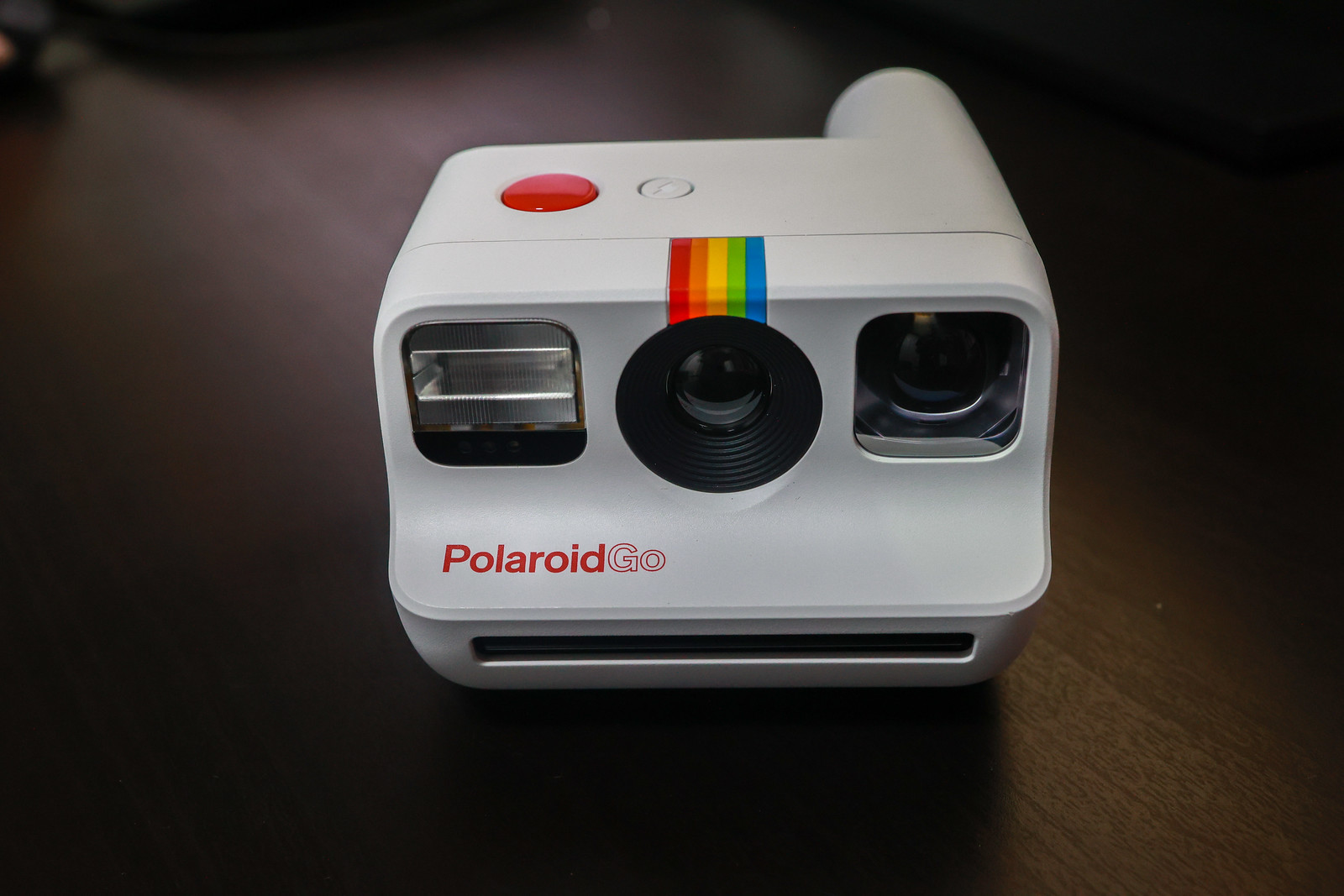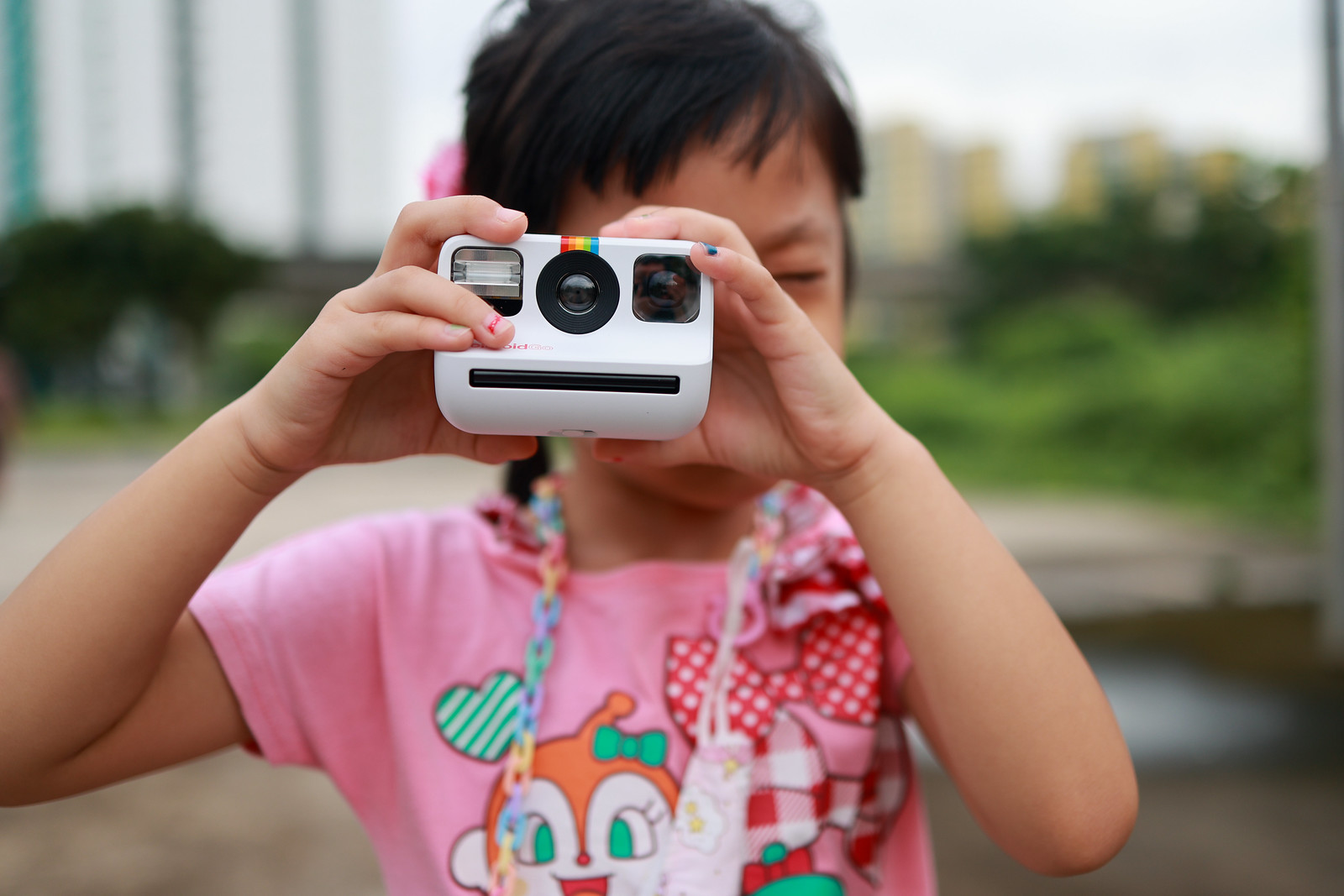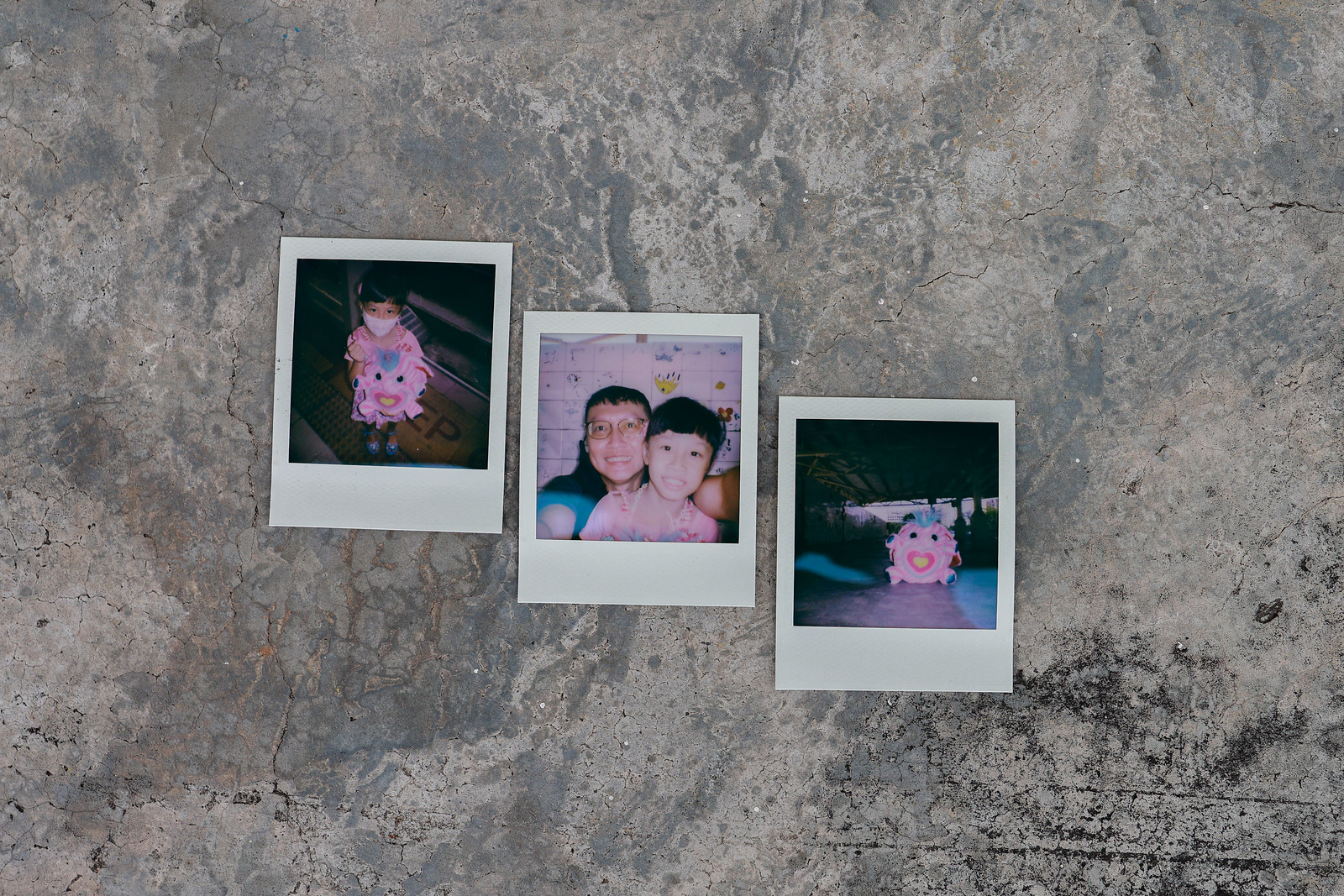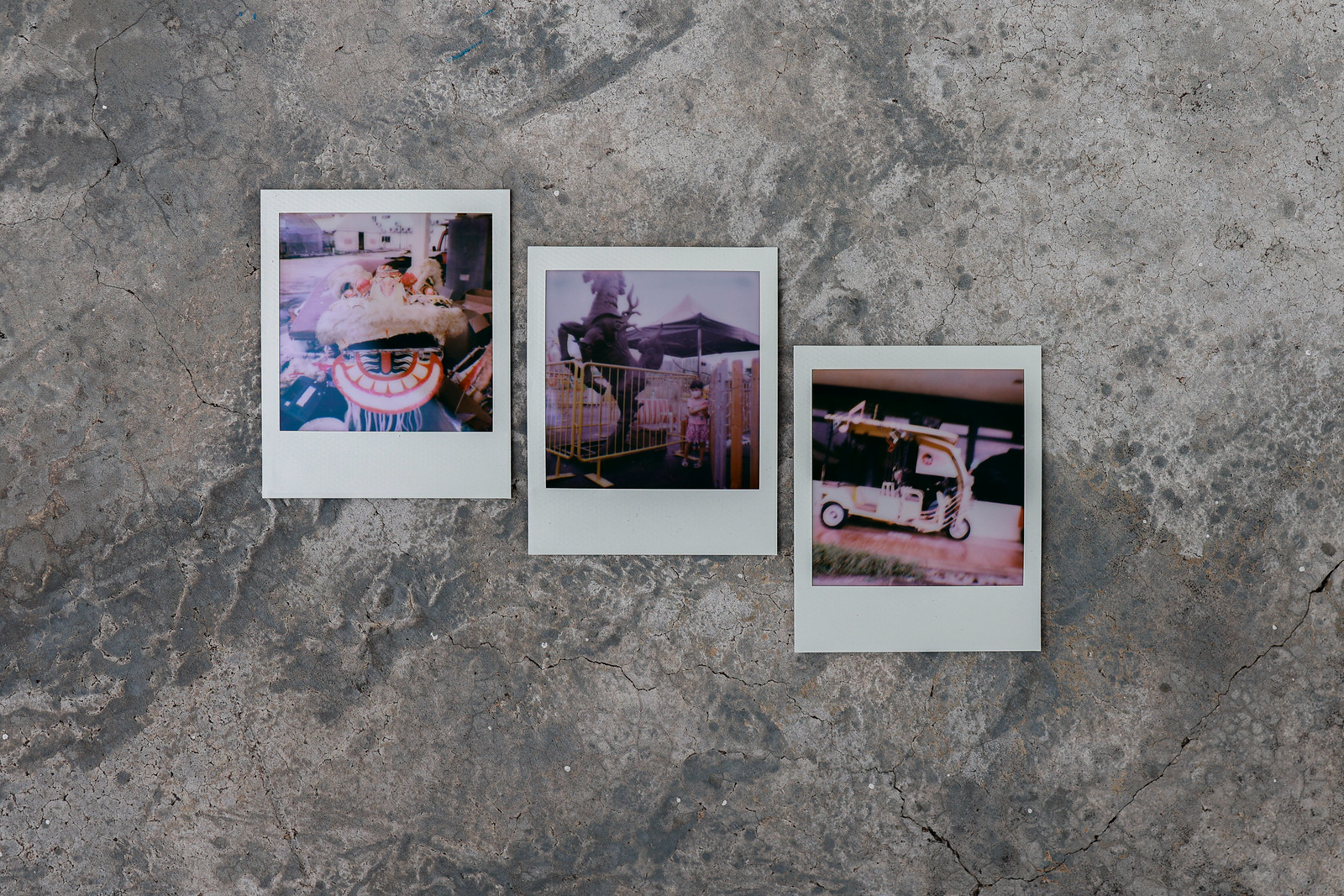Polaroid GO
Disclaimer: Contents are reposted from Keith Wee's blog review.
Review of the Polaroid GO – Teeny Mini Mighty
After my in-depth of the Polaroid Now, an instant Polaroid film with a much-awaited and useful autofocus function, a week ago I received something that Polaroid pitched as “the world’s smallest analogue film camera“.

It is not often one associates the word ‘breakthrough’ with Polaroid, a brand more known for its history over its technological advances but this time round, Polaroid has managed to pleasantly surprise with this teeny pocketable wonder.
Seemingly sold out in the United States and only available in a handful of selected countries, I will say that the Polaroid now has a direct rival to Fuji’s successful Instax series.

Technicalities
Firstly, the Polaroid GO is TINY. You have to hold it in yours hands to understand how small it is in real life. The Polaroid Go is the world’s smallest instant camera at 105 x 84 x 61mm (4.1 x 3.3 x 2.4in), the diminutive body fits neatly in your palm and will go into the back pocket of your jeans if you try. (obviously skin tight versions don’t count)

The Polaroid GO is so small it makes the Polaroid Now or even the Fujifilm Instax Mini cameras look positively gigantic in comparison.

The Polaroid GO comes in at a featherlight 242 grams, its own lithium-ion rechargeable battery. Each full charge is advertised to last you 60 packs, which is a massive 480 Polaroid shots. I never got close to testing this number fully simply because “who shoots 480 Polaroids at one go?”. There is a USB-micro port on the side for charging purposes.

The focal length is around 51.1mm with a field of view of diagonal 65.1°, horizontal 48.1° and vertical 49.1°, making it easy to frame and use being similar to the human eye’s view.

The Polaroid GO comes with a clear optical viewfinder to the left, and what you see in it is largely indicative of what you will photograph. The top is dominated by the shutter and flash ON/OFF button while the LED panel is next to the ON/OFF button. The flash button also doubles up for other operations like double-exposure and timer.
Unlike the Polaroid NOW, the Polaroid GO is a fixed focus camera with a minimum focusing distance of around 50cm (1.64 ft). How I shoot is simply stretch out my arm as a gauge, anything further than that = in focus!
An all new Polaroid instant film format
Obviously the smaller camera size entails an all-new instant film format. Each cartidge of Polaroid Go film includes eight 67 x 54mm (2.6 x 2.1-inch) shots, which have a square 47 x 46mm (1.85 x 1.8-inch) image area.

One thing I positively noticed was that the Polaroid GO films seem to have improved details over the original i-Type films that the Polaroid NOW uses. Polaroid makes no mention of this but my personal take is they likely made some tweaks.

It is a bit tough to believe but yes, the size of an original i-Type Polaroid film is around the size of the entire Polaroid GO camera.
Just like I-Type, Polaroid Go prints produces muted, almost dreamy-like colours, contrasted against darker, more dramatic shadows but yeap, I noticed, with better details than the i-Type Polaroids.

One will likely draw comparison to Fujifilm’s Instax Mini films and both types easily fit into the wallet-sized category with the main differences being the aspect ratio where Polaroid goes 1:1 Square (46x47mm image area) while the Instax Mini films go by a 1:1.1348 ratio (61 x 46mm image area).

Usage and Handling
Personally the loveliest part of the Polaroid cameras is it simplicity in operation and the GO keeps to this tradition. Depress the ON/OFF button and instantly the LED shows the number of available shots (films)

Once the shutter is depressed, a thing to take note is to leave the film in the camera’s ‘lip’ for approximately 5 seconds before removing it. As stated in the instructions, please do not start ‘flicking’ it around (I know this is a common habit but please don’t) and simply leave the Polaroid print in a dark spot to develop for around 15 mins. The 15 mins wait-time is necessary for all the colours to form.

Selfie fans will also appreciate the lens-facing side of the viewfinder, which works very well as a framing mirror for composing your selfie or we-fie shot.

Note that double-pressing the flash button activates double exposure shooting, and holding it down turns on the self-timer. This I expect those who forgo reading the manual will not know.

Loading the film is simple, release the latch on the camera’s bottom, pop out the empty cartridge and replace accordingly.

Conclusion
Polaroid’s films has consistency produced a delightful mix of films with dreamy eye-catching colours, and this heritage continues with the Polaroid GO and its all new Polaroid films.
While some will alway say ‘larger is better’, here the smaller sized prints are actually pretty adorable and will easily cheer up any kid (or adult). And now we have the best of both worlds, the i-Type which is as large as the Polaroid camera itself or the Polaroid GO style mini films.

An initial worry was the performance in low light conditions (say shooting in the dim indoors) but the Polaroid GO is surprisingly capable in most lighting conditions as long as one remembers to keep the flash on.
Pricing wise it is indeed more costly than Fujifilm’s ubiquitous Instax Mini films but you pay the extra premium for the compactness and most of all, the right to use Polaroid instant firms, the one who started the whole instant film world.

Thank you for reading.
*for Singapore residing people, there is an exclusive launch of the Polaroid GO at Takashimaya on the 27 of May 2021. Drop by if you are keen and make sure to stay safe.
Disclaimer:
- The Polaroid GO camera was returned to Polaroid at the end of the review period. I was not paid for the review.
- The film samples were all shot by me, the excellent Canon R6 with RF35mm f1.8 STM was used for the photos of Lynn holding the Polaroid GO.
